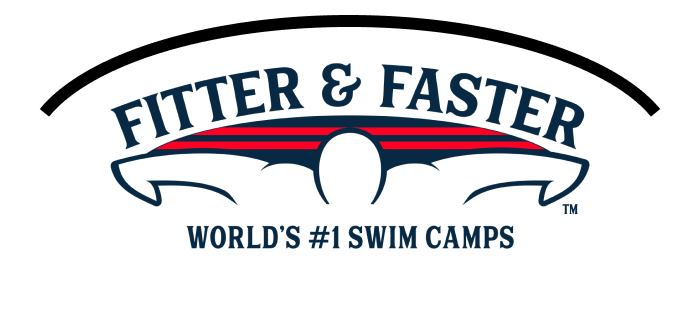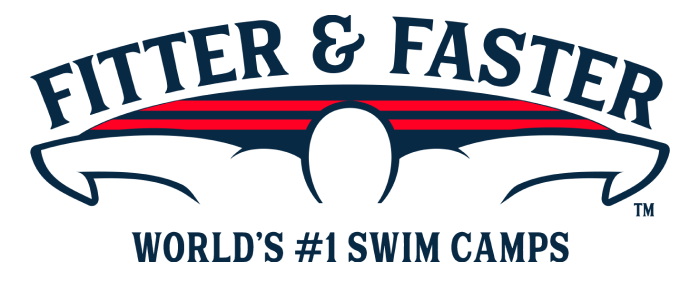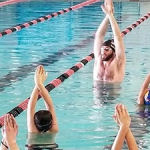Past Clinic: Essentials for Faster Backstroke Swim Camp (Ages 13 & over)
Westridge Recreation Center
9650 Foothills Canyon Blvd,
Highlands Ranch,
CO 80129
A description of what was covered at this past clinic is below the upcoming clinics.
Upcoming Swim Clinics and Camps
Within 250 miles of Highlands Ranch, CO.
Past Clinic
Introduction
Fitter & Faster is producing a 2-day swim camp for competitive swimmers ages 13 & over at the Westridge Recreation Center in Highlands Ranch, Colorado on September 13 & 14, 2025! Please see below for additional swim camps in Highlands Ranch, Colorado.
ESSENTIALS FOR FASTER BACKSTROKE SWIM CAMP (Ages 13 & Over)
-> DAY 1 (Saturday, September 13): The Fifth Stroke - Underwaters
-> DAY 2 (Sunday, September 14): Backstroke Technique
Scroll down for details on the curriculum!
-> Availability in each session is limited to 24 participants to ensure the highest level learning experience.
-> SAVE when you purchase the “Entire Camp Bundle” for your swimmer.
SESSION START TIMES (Both Days): Check-in 12:30 PM, Camp 12:45-3:45 PM
ADDITIONAL SWIM CAMPS IN HIGHLANDS RANCH, CO:
Suggested Participants
Our top priority is to provide a world-class learning experience for all participants at all of our camps. This camp has sessions for swimmers ages 13 & over. Participants will range from one-year of competitive swimming experience to AAAA times and faster.
Curriculum
This 2-day swim camp is designed to help swimmers unlock powerful underwater kicks, improve streamline efficiency, and enhance stroke mechanics for faster, smoother backstroke swimming. Working closely with our world-class clinicians, swimmers receive expert coaching and targeted drills that elevate every lap. Whether looking to shave seconds off your race or build a stronger foundation, this camp provides the tools and guidance to take your backstroke to the next level.
DAY 1 (Saturday, September 13): THE FIFTH STROKE - UNDERWATER DOLPHIN KICKING
In the first session, our Elite Clinicians will work with participants to enhance the fastest sequence for each race lap: streamlines, underwater dolphin kicks & breakouts. Finessing these techniques not only reduces drag and enhances efficiency but also contributes significantly to overall speed and performance in the water!
- STREAMLINE: The streamline - when done properly - is the fastest a swimmer travels while in the water. Proper streamlines are even faster than underwater dolphin kicking. Even the most elite swimmers in the world are constantly working on improving their streamline. Your swimmer will get tips to improve their streamline and a better appreciation of what they need to do on every single wall in practice and in races.
- INITIATING UNDERWATER DOLPHIN KICKING: Top age group and elite swimmers maximize their streamline on every single lap. They don’t start their underwater dolphin kicking while they’re still achieving maximum speed in their streamline! They also don’t want to start the underwater dolphin kicking after their streamline has begun to slow. Your swimmer is going to learn how to time when to begin their underwater dolphin kicking.
- POWERFUL UNDERWATER DOLPHIN KICKING: There are a few different techniques that swimmers use when underwater dolphin kicking. The common theme of these techniques is that the best swimmers kick up and down with equal power. We will show your swimmer the different techniques that elite swimmers use and teach them how to implement.
- NUMBER OF UNDERWATER DOLPHIN KICKS: Figuring out the optimal number of kicks off each wall, for each race, is essential to fast swimming. Elite swimmers want to spend only the absolute necessary amount of time underwater to establish speed with each length. They want to avoid losing their breath and taking weak kicks.
- BREAKOUTS: Many swimmers add movement within their breakout that creates drag and destroys all of the speed created during their underwaters. Participants will work on timing their breakouts to explode into each lap.
DAY 2 (Sunday, September 14): BACKSTROKE TECHNIQUE
While backstroke shares many concepts with freestyle, the actual skill can be much different. In this session, your swimmer will refine bodyline, rotation, kick, and pull specifically for backstroke.
- BODY LINE: Backstroke bodyline should eliminate unnecessary movement. Even small amounts of bobbing or swaying create drag. Participants will learn to maintain a flat, aligned posture and engage the core to support a strong, stable position in the water.
- ROTATION: Unlike freestyle, backstrokers rotate most fully onto their side when their hand is midway through the stroke. Rotation in backstroke is essential for two key reasons. First, to apply power during the pull, the swimmer’s hand must be positioned in front of the shoulder and at least a few inches below the surface of the water—something that’s only possible with proper body rotation. Second, rotation helps activate the large muscles of the back as the swimmer drives their hand through the surface and into the catch.
- CONSTANT MOTION: Unlike other strokes, backstroke has no built-in glide phase—the arms are always moving. Your swimmer will work on strategies to keep their stroke continuous and efficient, maximizing distance per stroke while maintaining tempo.
- KICKING: Effective backstroke kicking requires generating propulsion in both directions—both the forward and backwards motions. Your swimmer will learn to kick efficiently on their back, using ankle flexibility and consistent drive to support rotation and propulsion.
- PULL: Backstroke pull requires a high elbow catch, but also uses more of the full arm in the pull than any other stroke since the hand is pulls much further outside the body line. We will work on feeling that full pull and engaging the large muscles of the back to generate power.
ASK QUESTIONS
Swimmers and parents are invited to ask the clinicians questions during a Q&A session. Gain insight into their training regimen, diet and nutrition, and recovery tactics.
WATCH THE CLINICIANS
Observe clinicians swim at full speed and demonstrate a progression of perfectly executed drills to achieve powerful, efficient and fast swimming.
PUT YOUR SKILLS TO THE TEST
Throughout the camp, swimmers will practice what they've learned with some of the world's most elite Swimmer Clinicians and coaches!
Take a photo, get autographs, and chat with your clinicians!
Inquisitive, Educated Swimmers are Faster Swimmers! Sign up today!
Search all of our clinics...or request a clinic in your area









